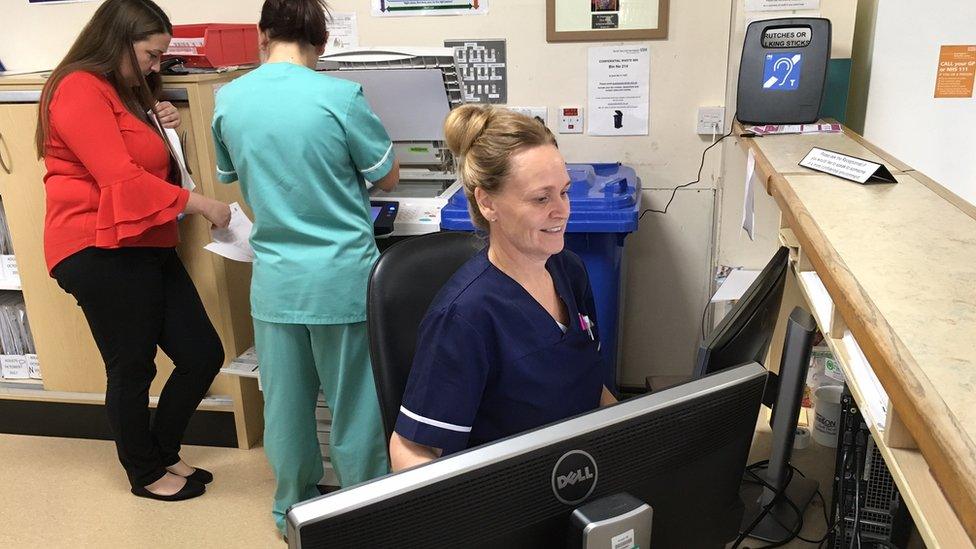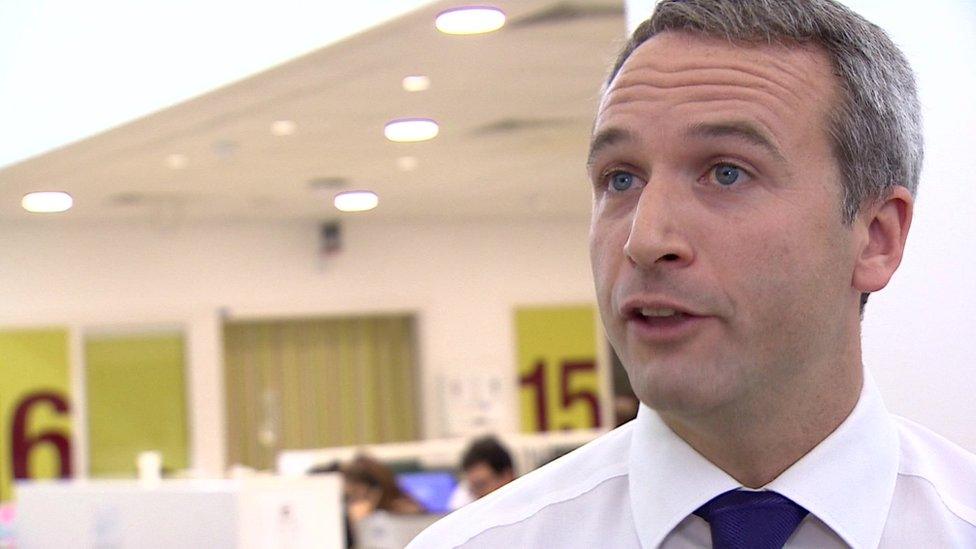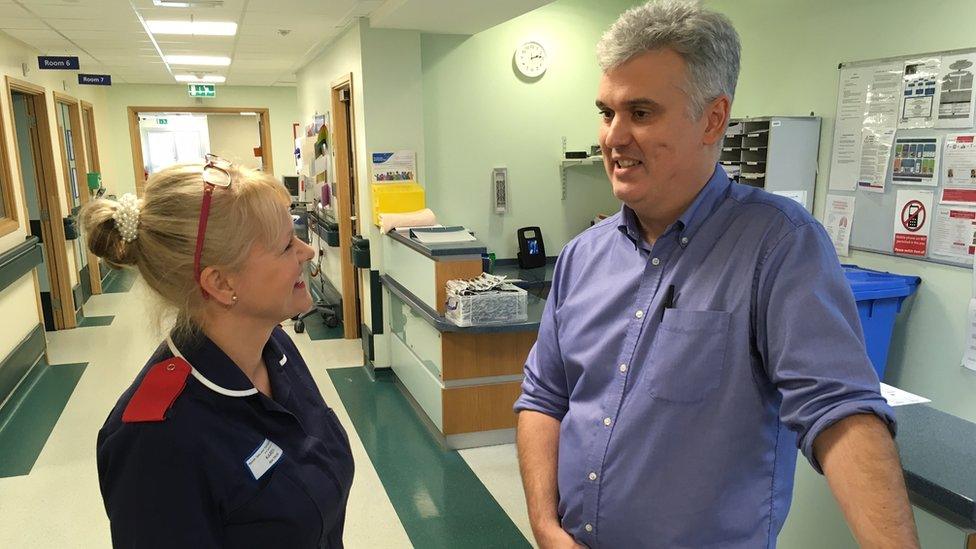The tale of two hospitals
- Published

NHS hospitals are facing major challenges in dealing with patient numbers, outbreaks of diseases like flu and hitting performance targets. So how do two of them, one in London, one in north-east England, cope with the strains they face?
Most hospitals now find that patient numbers are equally high coming through the doors of A&E in summer and winter. There is no let-up throughout the year. That's certainly the case at Northwick Park in north-west London, which has one of the largest emergency departments in the UK, in terms of floorspace.
"We had a busy August with sustained demand for urgent care," says James Walters, deputy chief operating officer at the London North West Healthcare Trust, which runs Northwick Park. But, he adds, things are "concerning going into winter".
Northwick Park has been planning for winter for some time, including providing extra beds. One priority is to encourage more walk-in care, with patients offered "comfy chairs" rather than beds in cubicles while they wait to be assessed or treated.

James Walters, deputy chief operating officer at the London North West Healthcare Trust
But the big fear is a flu outbreak. The system was running at full tilt last winter across the NHS with hospitals running out of beds at times, and that was without a serious flu problem. Mr Walters says he is "very worried" that winter will bring a surge in flu cases.
As always the major challenge is finding beds for new arrivals: "We are always stuck with patients who would be better off outside the hospital," he says. One local authority employs health staff to go into the trust's hospitals to identify elderly patients who would be fit to leave if there was the right care in place in the local community. These staff then follow up with home visits.
But, Mr Walters says, even with schemes to reduce delays discharging patients, there are problems in managing the flow of people through the hospital. "There's a real ethical dilemma," he explains "balancing between care of people coming in and freeing up beds".
London North West Healthcare is the second busiest trust in London and has been struggling, like most others, to hit the 95% target for dealing with patients within four hours of arriving at A&E. Recent months have seen performance between 80 and 85%.
The target of an 18-week wait for non-emergency surgery has also been missed. Mr Walters argues that while performance is important, prioritising the highest-risk patients and focusing on safety are the main aims. For routine surgery, "we appreciate we can't always provide timely care as we would wish."
Dr Ali Refson is an experienced emergency medicine consultant who has been at Northwick Park for 17 years. For her, the increasing demand for care every year reflects the ageing population with multiple health problems.
More people arrive with complicated conditions and through no fault of their own need longer to recover and more days occupying beds.
She sees the system as a "bottomless pit" of requirements for care and the team on the frontline can only do their best to provide safe and compassionate treatment.
Talk of targets, she believes, misses the point: "Every single number we have coming in is a human being, a patient, someone with relatives and they will have to be treated as best we can: reaching numbers to us is less important than actually looking after each person."
Very few hospitals are hitting their targets most months but there is a cluster of them in the north-east of England.

Nick Roper and Karen Blakemore of University Hospital, North Tees
At the North Tees and Hartlepool Trust they believe that closely integrating the work of the main hospital and minor injuries units helps control the flow of patients through A&E.
Nick Roper, clinical director for emergency care, says they work closely with other hospitals in the region to develop new methods and processes: "There are a lot of good organisations locally that work very proactively to develop new ways of working.
"We all work quite differently in many ways - in emergency care we're not afraid to try what other people have tried, to learn off each other, visit each other's organisations and see what they are doing and whether we can pinch any of their good ideas."
One idea developed this year has already paid dividends. An experienced nurse at the reception area of University Hospital of North Tees makes a quick decision on where people arriving should go. Some are sent straight to the neighbouring urgent care centre.
Karen Blakemore, emergency department matron, says it has helped reduce the flow into A&E: "It's made a tremendous difference certainly for patients. We don't want patients sat in a waiting area in accident and emergency, particularly during very demanding times when they can be seen more effectively in the urgent care centre next door."
North Tees and Hartlepool are quietly satisfied with their performance this year. But they are not pretending it is easy to fill vacancies at a time when there's a shortage of qualified staff. They are certainly not taking anything for granted as winter looms ahead.